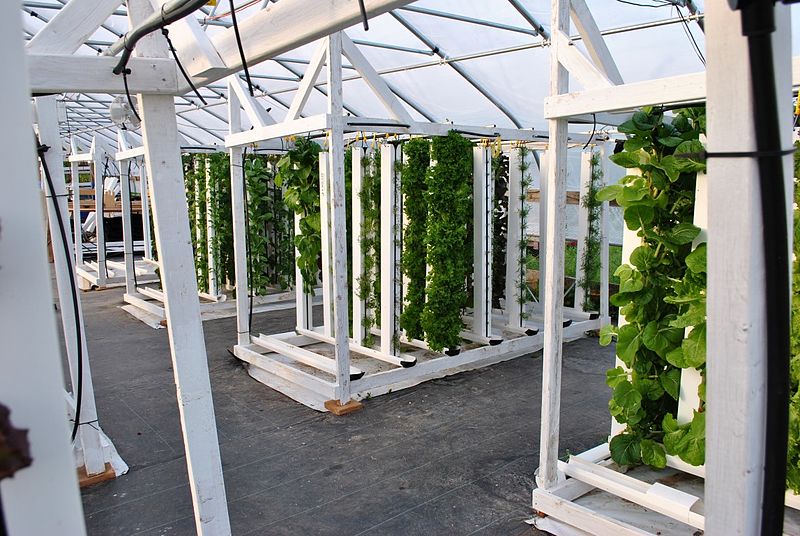Vertical Farms race to transform future of Food Growth
February 24, 2019 | Expert Insights

The idea of vertical farming has been around for a while now. In order to be economically viable, farmers need to work on a sustainable business model.
Europe’s biggest vertical farm owned by Jones Food Company (JFC) has been striving towards an expansion of their facility in Scunthorpe as well as opening new ones.
Background
Tractor-driving farmers in vast expanding farmlands might soon be replaced by highly skilled technicians and scientists in lab coats, working in massive warehouses converted into laboratories with crops stacked from the floor to the ceiling. These indoor growing operations are used to grow lush green crops without soil, natural sunlight or pesticides. The practice is made possible with advances in biotechnology, engineering and data science.
Vertical farming is still in a stage of infancy, needing more research and development at this phase. Food futurists and industry leaders say these high-tech vertical farming operations are the future of agriculture — able to operate anywhere, virtually invincible against pests, pathogens, and poor weather, and producing local, fresh, high-quality, lower-carbon food year-round.
Analysis
With agricultural areas and global supply chains set to struggle in the future, cities will have to start producing food themselves and traditional agriculture will need to introduce weather-resistant and resource-saving technologies.
With most of the population confined to cities, the need for fresh produce is at an all-time high. There is limited access to agricultural land. Intensive farming and the use of pesticides coupled with soil erosion has caused a decline in the quality of farm produce. Change in seasons also causes a drop in the rate of production.
Vertical farms are technically labs set up indoors where the plants are grown hydroponically. Plants are fed the necessary nutrients, diluted in water, and the effect of sunlight is created by the artificial glow of pink-hued, LED lights. They have sensors fitted inside to help check and control the humidity.
A 2016 study published in Cornell University found that energy consumption and the carbon footprint associated with vertical farming was higher than that of a greenhouse. The advancement of technology in the past two years have led to the production of low energy consuming LED’s as well as an improvement in the efficiency of power generators.
The cold storage unit that has been converted to a vertical farming lab by JFC runs on a carbon footprint of 20%, where the energy used makes up for 20-30% of the total production cost. JFC has partnered with Current, a division of General Electronics, to manage their lighting technology. They have also installed solar panels in order to produce their own renewable energy that can be used for production. The farm is looking to become fully self-sufficient.
Countries like Japan and Korea, where tillable land is scarce, were early adopters of vertical farming techniques, and the US has seen a boom in recent years as venture capitalists invested in the trend. The UK has three vertical farming facilities including JFC.
The high cost of production leads critics to believe that this method will remain a niche. Companies like JFC are seeking to prove their detractors wrong. They are hard at work trying to prove that vertical farms can produce enough high-value crops at scale so that the revenue generated can exceed the considerable energy costs incurred by replacing the sun with artificial lights.
“Many big agricultural and horticultural growers are experimenting with different types of indoor farming to improve the yields, quality and shelf life of crops,” said Rhydian Beynon-Davies, head of novel growing systems at Stockbridge Technology Centre, a publicly funded farming research organization.
Technology companies like GE and Phillips are pitching new lighting solutions that could help grow a wide variety of crops. This, coupled with software that analyses data from sensors, is enabling a new era in precision farming.
Assessment
Our assessment is that innovation leads to progress. Although vertical farming is still in its budding stages, the adoption of these techniques could cause another Green Revolution. A good business model paired with the correct technology could lead to a successful venture.
Market Watch
In the US, San Francisco-based Plenty raised $200m in 2017, led by the SoftBank Vision Fund and including Jeff Bezos, the founder of Amazon and the former Google boss Eric Schmidt. The company has announced plans to open vertical farms in China and the Middle East.
The market for vertical farming tools, such as hydroponics and aquaponics, was worth $2.5 billion in 2017 with analysts forecasting its growth to $24 billion in 2024.
Image Courtesy: Bright Agrotech, Hydroponic vertical farm, CC BY-SA 4.0








Comments